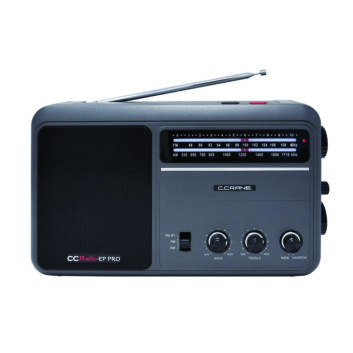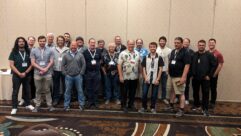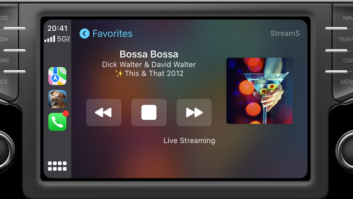WHERE’S THE DIGITAL?
Good article about a good radio (“C. Crane Offers Up a Premium Portable,” Dec. 18, 2019 issue). But why doesn’t the new CCRadio-EP receive HD channels? The good journalists at Radio World should have at least asked “Why not HD?”

I realize station managers and sales reps see no profit in HD Radio, but that is the same thing they said about FM in the 1950s. Some even tried to kill FM because they didn’t think people would buy it. Smart stations persisted in marketing FM. Those that stuck with FM eventually had the last word.
It is a “chicken or egg” thing with HD Radio and receivers. People aren’t interested in HD because stations don’t promote it and receivers are not available. I would have been a lot more excited about this new radio if it was future-proofed and promoted HD Radio.
Kevin Ruppert
Madison, Wis.
CORRECTING A DISTORTION
I found Mark Persons’ article “Find Your Modulation Sweet Spot” (RW, Oct. 9, 2019 issue) very informative and helpful. Distortion is a turn-off. And I had never considered the distortion inherent in the garden-variety AM envelope detector in the home receiver. Shame on me. Hopefully, this will lead to better-sounding AM.
One nit to pick: The peak power for a 100% modulated AM signal is four times carrier power, not 1.5 times as stated in the article.
James K. Thorusen
Chief Engineer
Central Coast Electronics
Lincoln City, Ore.
Mark Persons replies: Average power is what I was thinking of when writing the article. Mr. Thorusen is correct in saying that peak power is four times unmodulated power.
EAS HOSTAGE?
Once again we have a great example of how unreliably the EAS system is implemented. At least one major supplier of equipment recently sent out emails requiring all stations to upgrade software within a week or be unable to run the system. On top of that, in what feels like an extortion scheme, they required each station, including LPFMs and small markets that are barely getting by, to just find $350 from somewhere.
The units cost a considerable amount, and I think it is obscene to hold the users of this product hostage for software upgrades, I thought that was the reason it cost so much to buy.
I still maintain that if we want a truly functional emergency system we need to revisit the entire system in light of technology developments over the past years since the EAS was designed, and replace EAS with a more robust system that has hardware and software supplied and managed by the FCC.
This kind of haphazard process amplifies the obvious failings of EAS, it is unworkable, and cannot be made workable.
Michael Baldauf
LONG LIVE RADIO
I respectfully disagree with the person who wrote that radio is dead.
Having spent much of my career in electronic media, I fully understand how radio, TV, satellites, the internet, etc. all fit together to give us a remarkably flexible means of disseminating information.
Sitting here in my home office at my computer, I can “dial up” radio stations from all over the country (and the world). For example, I can listen to a station 900 miles away in my hometown. Five or ten minutes listening on my computer gets me up to speed on the late-breaking news from “back” home. If there is something really interesting, I can pick up the telephone on my desk and “connect” with someone involved in the story. If I am away from home, I can do the same thing on my laptop.
If the story is really “hot” I can pick up my cellphone and get connected to a real live human being who is involved in the story, regardless of where I am.
Long live radio! The “sound” medium.
Lewis D. Collins
Peabody, Mass.










